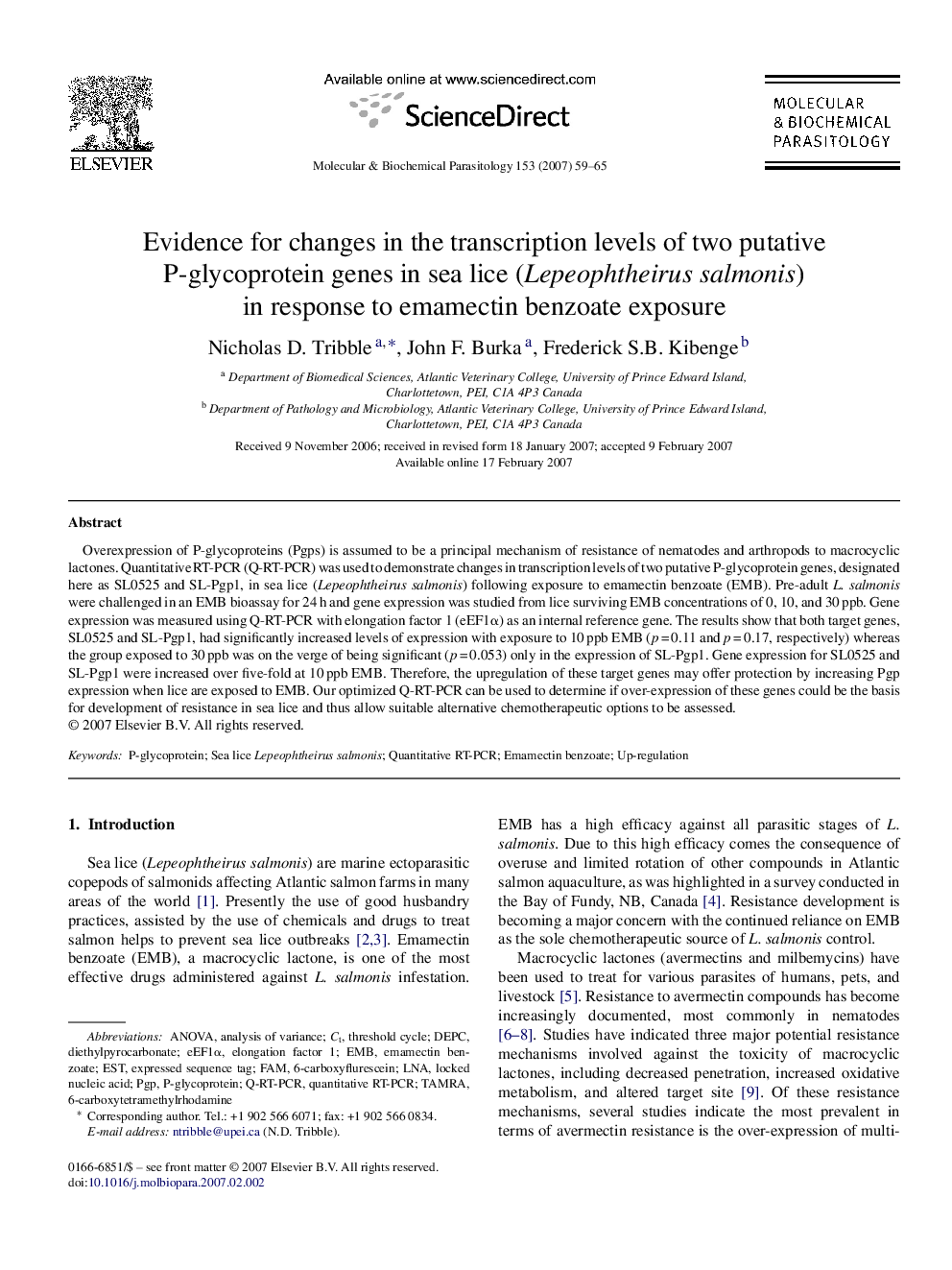| Article ID | Journal | Published Year | Pages | File Type |
|---|---|---|---|---|
| 5916082 | Molecular and Biochemical Parasitology | 2007 | 7 Pages |
Abstract
Overexpression of P-glycoproteins (Pgps) is assumed to be a principal mechanism of resistance of nematodes and arthropods to macrocyclic lactones. Quantitative RT-PCR (Q-RT-PCR) was used to demonstrate changes in transcription levels of two putative P-glycoprotein genes, designated here as SL0525 and SL-Pgp1, in sea lice (Lepeophtheirus salmonis) following exposure to emamectin benzoate (EMB). Pre-adult L. salmonis were challenged in an EMB bioassay for 24 h and gene expression was studied from lice surviving EMB concentrations of 0, 10, and 30 ppb. Gene expression was measured using Q-RT-PCR with elongation factor 1 (eEF1α) as an internal reference gene. The results show that both target genes, SL0525 and SL-Pgp1, had significantly increased levels of expression with exposure to 10 ppb EMB (p = 0.11 and p = 0.17, respectively) whereas the group exposed to 30 ppb was on the verge of being significant (p = 0.053) only in the expression of SL-Pgp1. Gene expression for SL0525 and SL-Pgp1 were increased over five-fold at 10 ppb EMB. Therefore, the upregulation of these target genes may offer protection by increasing Pgp expression when lice are exposed to EMB. Our optimized Q-RT-PCR can be used to determine if over-expression of these genes could be the basis for development of resistance in sea lice and thus allow suitable alternative chemotherapeutic options to be assessed.
Keywords
Related Topics
Life Sciences
Biochemistry, Genetics and Molecular Biology
Molecular Biology
Authors
Nicholas D. Tribble, John F. Burka, Frederick S.B. Kibenge,
